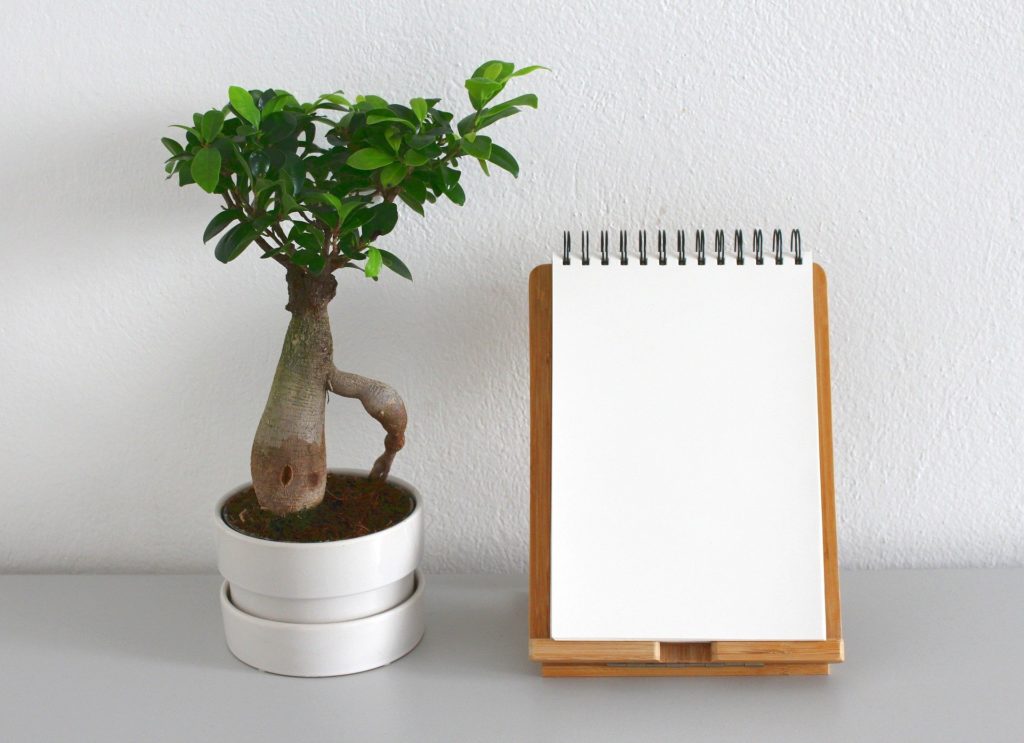What Are Bonsai and Why Do People Love Them?
The word “bonsai” literally means “tree in a tray,” which is what it is—physically speaking. But for many, caring for a bonsai tree (and the art of bonsai) is so much more.
So, what are bonsai? And why do people love them so dearly?
Let’s Go Back to the Roots
Very simply, the art of bonsai is growing small trees in containers, and “pruning” or trimming and wire-wrapping them into a particular shape. The hope is to have a mini representation of a vast forest—your own bit of nature—sitting in a pot on your desk.
To get a better picture of what makes the art of bonsai so special, let’s take a look at the history of this plant.
Know the History
Most agree that the art of bonsai dates back to around 200 B.C. in Ancient China. That’s over 2,000 years ago! Chinese tomb paintings show images of bonsai-like trees in shallow pots. And manuscripts talk about “artistic container trees,” which are assumed to be bonsai.
Through trade and gift-giving, bonsai made its way to Japan. In 13th-century Japan, it cemented itself as an art form in culture and in hearts. Growing and sculpting bonsai quickly became a passion of many. The Japanese continued to develop the art practice. Buddhist monks even got on board. Many of the core art principals they came up with are still observed today.
Fast-forward to 1878: At the World’s Exhibition in Paris, the bonsai made its first appearance on the international stage. And it was a hit! Every private art collector at the time couldn’t wait to get their hands on a bonsai—and paid top dollar for them, no less.
But it was only after WWII that bonsai became less expensive and more accessible to everyone. Since you no longer had to be a private art collector to have your own bonsai, many people around the world took up the hobby—and the love for the art of bonsai grew.
Know the Plants
Since Ancient China, one of the goals of bonsai has always been to create a living mini sculpture that reflects the beauty of nature. Or in other words, mini versions of bigger plants as they’re found in nature. But bonsai are made to stay small. By pruning, wiring, and being kept in containers that intentionally restrict their growth, your bonsai stays miniature.
This may surprise you, but as for the plants themselves, many species of bonsai should be kept outside. This is so that they can experience natural season cycles to allow for growth in the spring. But some tropical and subtropical species of bonsai thrive in warm temperatures and humid environments; these do very well indoors.
Here are six types of bonsai trees that do really well indoors:
- Ficus Bonsai
- Sweet Plum Bonsai
- Fukien Tea Bonsai
- Hawaiian Umbrella Bonsai
- Jade Bonsai
- Juniper Bonsai
When it comes to styling your bonsai, it is up to you how you want your tree to look! Don’t be afraid to get creative.
There are tons of style guides out there that have been practiced over many years and many cultures.
There are five basic styles that get their name from the angle at which they grow in the container:
- Formal Upright Style (Chokan): trees that are standing nice and tall with a straight trunk
- Slanting Style (Shakan): trees that seem to be struggling in a windstorm
- Informal Upright Style (Moyogi): trees that zig and zag and look like they have suffered in the elements
- Semi-Cascade Style (Han-Kengai): trees that look like they’re hanging off the side of a cliff
- Full Cascade Style (Kengai): trees that follow the semi-cascade style but hang much lower
The Art of Bonsai: Pruning and Wiring
Shaping and styling your bonsai can be as simple or intricate as you want. You can simply trim it back a bit for maintenance to keep it from growing out of shape, or you can give it a heavy pruning to give it a distinct shape and style.
The shape of the bonsai’s trunk and branches can be changed and controlled through “wiring.” This is the act of wrapping wire around the trunk and branches of the tree to bend and reposition them. When the branches and trunk are set into their new shape (usually after a few months), you remove the wire.
Now that we know a bit about the history of the bonsai and facts about the plant itself, let’s talk about the lessons they teach.
The First Lesson I Learned From a Bonsai Tree: Patience
Whether grown from a seed or purchased at a nursery, your bonsai takes time to grow. You care for it every day by giving it proper water, trimming it, fertilizing it when it needs a boost—and it rewards you with beauty for years to come!
The Second Lesson I Learned From a Bonsai Tree: How to Build a Routine
Many mindset experts confirm that building a well-balanced routine helps your overall happiness levels and decreases stress. Who doesn’t want that?
Build caring for your bonsai into your morning routine. Wake up, make coffee, check on your bonsai, and water it. Starting your day with this small gesture of attentiveness and care sets you up for success throughout your day.
The Third Lesson I Learned From a Bonsai Tree: Success Looks Different for Everyone
One day your bonsai may start to look droopy and wilted. You’ve mastered the art of watering your bonsai and built it into your morning routine, given it plenty of sunshine—what could be wrong?
Try not to be discouraged. Maybe there’s an unknown pest hiding on the underside of the leaves of your bonsai. Do a little investigating. Check its roots and leaves. There’s very likely an easy fix to perk your bonsai up.
Want to show your plants some love? Check out some of my personal favorite products in our Bonsai store. Your bonsai will thank you!
Join the Bonsai World
At The Bonsai Resource Center, our goal is to equip you with everything you need to grow and maintain a truly beautiful bonsai tree. This is our passion, and we want it to be yours as well! Whether you are a bonsai beginner or are looking to hone your skills, check out our other articles and visit our shop for all your bonsai needs. And connect with other bonsai lovers in our Facebook Group—we look forward to seeing you there!



